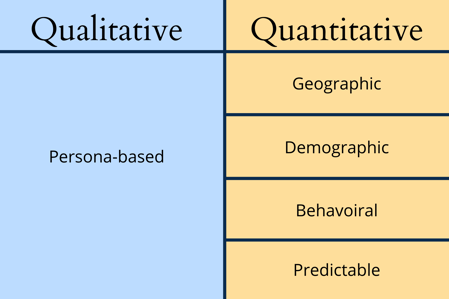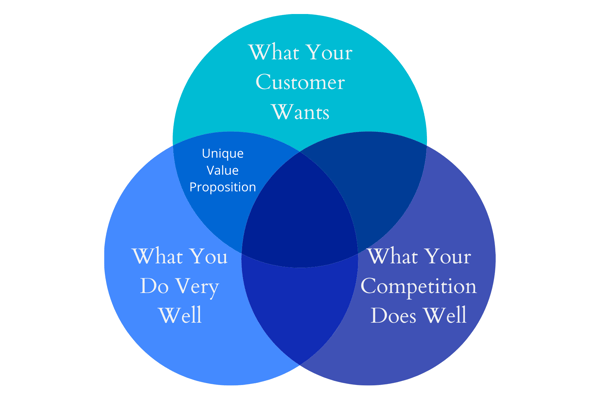Learn about Problem-Solution Fit and how to create a plan to benefit your new business.
Startups do not have the time or capital to produce something that will not meet a market need. This article will focus on understanding how to connect making a product that people want and building something that actually solves a problem.
“It is not your customer’s job to know what they want.” - Steve Jobs (Apple)
Steve Jobs was not implying that you should not engage with your customers. In fact, that is not the point at all. He was implying that it is not your customer’s job to design the product. You are in charge of that! Your customer can tell you what problem they have, but can not design the final product.
“The biggest risk for startups is building something no one wants.” - Ash Maurya (Lean Startup)
Startups can fail for a variety of reasons. Each year, CB Insights researches and creates an infographic based on the most common reason why startups fail. Check out this article for more information.
Despite the long list, it is clear that the #1 reason for failure is a lack of market need. You can also see that a few of the other top 10 reasons are related to miscommunication between the company and the customer, such as “User Unfriendly Product” or “Ignore Customers.”
Now that you know why a startup needs a Problem - Solution Fit, we can dive into understanding what it is. For this you will need to ask yourself these three questions:
Do customers really need this?
Will they pay for it?
Can I build it?
Often what happens is startups start backwards. They will start by asking themselves if it is feasible to build instead of if it is required in the first place. Asking if it was feasible may have worked better during the manufacturing era, but not so much now.
Now, you need to make sure that you are solving a real problem (and people will pay for your solution) before you begin mass production. The saying “If you build it they will come” is not necessarily applicable.
Next we will be going through the 5 questions a startup needs to consider when developing a new product.
The first step is identifying what the problem is. Your customers will buy products to do a job that they specifically need to carry out. They only way to figure out what they are willing to pay for, or invest in, is to talk to them.
Talking to customers is the best way to truly understand their decision making process and preferences. You can do this in many ways, including:
Empathy interviews
The more people you talk to, the better your product definition will be
Observe a workplace and find where the inefficiencies are
Ask your potential customer to write down what they are frustrated with or need clarification on
This is similar to diary logging, but instead it is the company or interviewer that is recording what the customer thinks or does.
Time period will depend upon the industry.
As you can see there are many ways to answer the question: What is the problem? Getting to know the inefficiencies and problems in a customer’s life is important to the next steps as well. Check out this article to learn more about interviewing customers, specifically the VOC process.
It might seem counter intuitive to ask who is your customer after you have already done interviews and tried to understand what they want. But, this step comes second because it is all about refining your customer group. Think about it this way: The first step is interviewing potential customers, and the second step is refining who your real customers might be.
Once you have more conversations, you will start to realize that not all customers have the same problems. The population will segment itself into different groups, based on a variety of factors. For some quantitative examples:
There are even more ways than this to segment customers. You will need to understand which segment you want to help most (or first). It is important to understand which segment you want to help first, because you can’t help everyone at the same time. This is a common mistake for startups to make in their beginnings.
The idea is to start with one product for one segmented group of the population. If that works, you will be able to expand beyond to other segments. You want to avoid diluting your effort with too many customer segments.

The graphic above shows the difference between the first and second type of customer segmentation. Qualitative and persona-based customer groups are used for the first round of customer interviews and understanding. Quantitative segments are reserved for the second round of refining customers.
Oftentimes, there is an existing solution for whatever problem you are trying to solve. Customers often need to choose between this existing choice and whatever the startup’s invention is. Sometimes this requires convincing and a whole lot of marketing. For example, Henry Ford had to convince his customers that his car was faster than a horse. That was not an easy thing to do!
Knowing your competition is an important part about knowing how customers currently solve a problem. Usually competition for a startup falls into 3 categories:
The type of existing competition will depend on the market and the product. It is also important to find the balance between problem size. Startups should not try to solve a huge problem first, but they also don’t want to try such a small problem that customers will not pay to fix.
There are 2 examples of new startups. The disruptive and non disruptive ones. An example of a non-disruptive solution is OXO, the cooking utensil brand. OXO did not reinvent kitchen tools, they only made them more user friendly and sleek looking. Even though a OXO did not invent something new, they still did a lot of research before branding. They tried to understand the needs of the people so that they could design products that people want and will purchase for themselves.
An example of a disruptive invention is the Tesla car. They have disrupted the oil and gas industry by developing an affordable electric car. Tesla is addressing a market need: people desire to be environmentally friendly, while still having an efficient car. This differs from the traditional ‘car problem’ to solve-- the need to commute.
The key to defining a new solution is understanding the problem. Check out this article to learn more about finding solutions, and asking your customers about those solutions.
A startup needs to be a combination of what it does well and what the customer wants. Check out the graphic below for a great visual.

Notice how the Unique Value Proposition is completely separate from what the competition does. Startups need to differentiate themselves from the competition in order to stand out to both investors and customers.
A startup should be trying to fill a gap in the market. These questions should be considered:
What is the problem?
Who has the problem?
How are they currently solving it?
What is your solution?
How is the startup unique?
Answering these questions should help a startup develop their oven Problem - Solution Fit. This process can also be done by individuals, and not just startups.
Check out the follow-up article to this post, about Problem-Market Fit, here.
This content comes from a University Lab Partners webinar hosted in partnership with ScienceDocs, presented by Fehmida Kapadia. Check out the full video here.
Dr. Kapadia, PhD in Biochemistry, is a commercialization expert who has supported over 100 startups in the scientific space. As a university professor she has taught entrepreneurship classes, as a mentor she has served startups through the NSF iCorps program, and as a consultant, Dr. Kapadia has provided startups with such services as market research, customer segmentation, value proposition development, go-to market strategy and much more.
Be sure to subscribe to the ULP Youtube Channel to never miss another webinar, and connect with us on LinkedIn to stay in the loop!
Download The Ultimate Guide to Wet Lab Incubators in Southern California, a handbook to assist life science start-ups through the entire decision-making process to find wet lab space.
Download Now